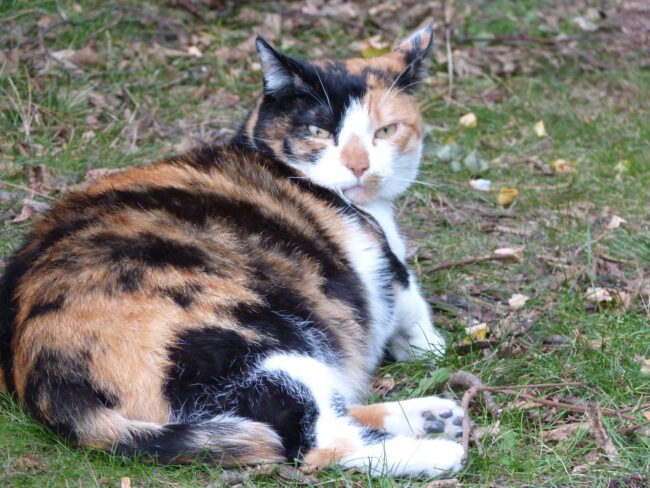Table of Contents
Breeding cats is a highly rewarding experience. While cats are not known to have problems in pregnancy and birth, it is important to be aware of everything involved in the process so that you can identify when a problem arises. Breeders should learn what is normal and what is not to ensure their kitty and the kittens are safe.
One of the problems cats can experience during birth is interrupted labour. In this guide, we learn what this exactly is, how you can identify it, what to expect with this condition and what you can do about it.
Interrupted Labour In Cats – A Complete Guide
Feline pregnancy lasts about two months with the cat’s normal behaviour until the final week when it should be confined for observation of labour. As the labour starts, the kitty can become restless, move about, meow and visit the litter box. The initial labour lasts for a few hours to up to a day before the second stage begins, signalling the kitten birth. The interval between kittens is variable and can be anywhere from 10 minutes to 1 hour.
Some cats can experience interrupted labour, a common occurrence for felines. In this condition, when one or more kittens have been born, the mother cat stops straining and rests for a significant time before delivering other kittens. It will rest happily and suckle the delivered babies. It will accept food and drink and even nurse the kittens during this resting time. This time can vary greatly and can be anywhere from a few hours to 24 or even 36 hours.
After this resting time, the labour starts again, and the remaining kittens are born. This condition is completely normal in felines, and there is no need to worry if your cat goes into interrupted labour. As long as your kitty looks happy and bright, you should just wait and observe it without taking any steps. If you see that it strains but does not deliver the kitten, you can consult a vet to find out what is wrong.
Signs of Interrupted Labour In Cats
Interrupted labour is not a problem that needs concern or attention. It is a normal part of parturition and can be identified by signs of relaxation in the cat. After delivering one or more kittens, the kitty rests while the other kittens are waiting to be delivered. It has a normal appetite, no distress and is perfectly happy with the newborn kittens. If offered food or drink, the cat readily accepts them.
Interrupted labour is a resting stage that can last for up to 24-36 hours before the labour commences again. In case of a problem, on the other hand, the cat stops or delays delivering and is exhausted or restless during the period. This is a medical emergency and should be attended immediately.
How Far Apart Can Kittens Be Born?
The total time a cat takes to deliver the kittens is generally about 4-6 hours, with active labour of up to 40 minutes for every kitten. Most cats deliver four to six kittens in a litter though the number can vary between breeds. The interval between two kittens can be anywhere from 10 minutes to up to an hour though a kitten can be born soon after the placenta of the previous one is expelled. It can even take an hour for the next kitten to get delivered.
In some cases, the cat can go through interrupted labour, which goes into a resting phase of up to 24-36 hours before delivering the next kitten. This means the time between the birth of any two kittens can be anywhere from a few minutes to up to 2-3 days. This is completely normal unless the cat shows any abnormal signs.
How Long Is A Cat In Labour Between Kittens?
Cats can give birth to four to six kittens in a litter. The time between the birth of each kitten can vary. They generally take birth in intervals of 45 to 60 minutes though it can be more or less. An average kitten is delivered in three strong contractions. The entire process takes about six hours. The time between contractions decreases to about 2-3 minutes after the first kitten is delivered.
Once the cat starts experiencing strong contractions, their kittens usually arrive within 30 minutes to 1 hour, and the interval between any two kittens can be 15-30 minutes. If the cat has strong contractions but doesn’t give birth to a kitten for over 20 minutes, you should call a vet. It is advisable to keep track of the time between kittens to ensure there is no problem.
Cat Had One Kitten & Stopped? Here’s What To Do
It can be worrying if your cat gives birth to just one kitten. This is because felines are known to produce multiple kittens at once. However, though rare, it is completely normal for your cat to be pregnant with only one kitten. If you think there are more kittens yet to be born but the cat doesn’t deliver them, you should take the situation seriously to avoid danger to the mother and the babies.
Pay attention to the mother cat’s behaviour and signs to determine if there is any labour difficulty or interrupting labour. While it is normal for the cat to go into a condition called interrupted labour, it is important to confirm this by seeing the cat’s behaviour. If it appears relaxed and happy, you can wait for other kittens for up to 24-36 hours without concern.
However, if the cat shows discomfort and distress for about an hour and doesn’t give birth to a kitten, it is a veterinary emergency and should be addressed instantly. The time between the birth of two kittens is anywhere from 15 minutes to 1 hour. A longer labour period means the kittens are either stuck in the uterus or have some other birth difficulty.

